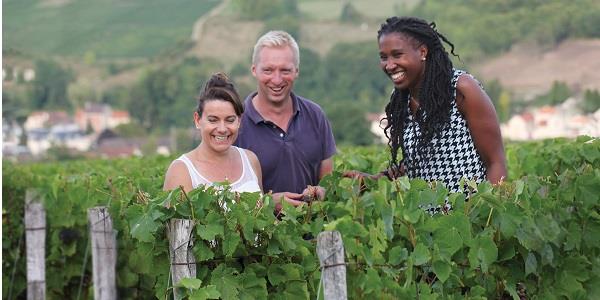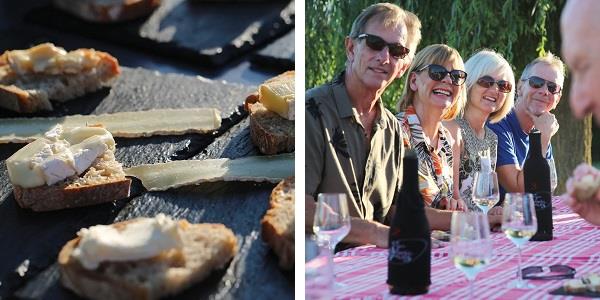
There are few places in the world with a more recognisable name than the French region of Champagne. This historic province to the east of Paris, just a short drive from Le Mont de St Siméon, is famous for its bright and sparkling wine, savoured at parties and celebrations all over the world.
However, did you know the champagne was not actually invented here? It’s said that monks arriving from the Languaedoc, in the south of France, bought their method for creating sparkling wine with them to Champagne. Once settled, they discovered that the climate and chalky soils in their new home produced a bright, bubbly wine which many people preferred to the original.

Despite this, one popular story credits the 17th Century monk Dom Pérignon with the invention of champagne. Although this may not be true, it is widely believed that he was the first to attempt the second fermentation (the part of the process which gives champagne its unique bubbles). If true, this makes him the founder of champagne as we know it today.
No matter how much truth lies in these stories, we can’t help but love this famous quote, allegedly said by Dom Pérignon after he first tasted champagne:
The unique taste and popularity amongst the rich and famous of the time, along with the region's proximity to Paris and other European cities, meant that champagne quickly became one of France's most iconic drinks… and not much has changed!
Today, the region is home to many renowned champagne houses, from large operations to smaller, independent businesses. Visitors to St Siméon can currently experience some of these first-hand by taking part in one of the excellent weekly excursions to local vineyards. These trips give you the chance to explore one of two nearby champagne houses; Le Châtelain and the Alain Bedel Champagne House.

Firstly, Le Châtelain provides visitors with a wonderful tour of its vineyard and cellar. For five generations, this family-run champagne house has produced refined, high-quality products. Over the years, they have thought outside the box, using their creative flair to create both unique and traditional champagnes, including Oak Barrel and Saignée Rosé. It’s a wonderful example of this beautiful region of France, as well as how families here have passed down their winemaking knowledge and passion through generations.

The second house, Alain Bedel Champagne House, is another independent winegrower, known for its award-winning champagnes and traditional methods. After years of growing grapes for personal consumption, they started producing champagne for distribution in 1954. Since then, the estate has expanded from one to seven hectares and now grows three champagne grape varieties. The family has expanded too, as shown by the below muselets, each decorated with a photograph of a new arrival! The tour is a fascinating insight into the careful process which goes into each of their delicious wines.


For those who want to enjoy some local produce from the comfort of their holiday property, Le Mont de St Siméon also hosts a free wine and cheese-tasting night every Thursday. Guests get the chance to sample a selection of local cheeses, followed by a blind-tasting of several different wines and a lesson on pairing the two together.

Ludivine and Damien from Sourdet-Diot Champagne also hold weekly tasting sessions on site. Ever since their first vines were planted in 1962, their beautiful vineyard has expanded to 11 hectares, with the southeast facing slope providing ideal conditions for their grapes. Using these decades of expertise and an undeniable passion for their craft, today Sourdet-Diot Champagne produces a wide selection of award-winning champagnes, which they are always pleased to share with our guests during their visits.
The wines and champagnes from both the tastings and the tours are sold on-site, so guests can treat themselves to a bottle (or two) of their favourites!


Click here to find out more about how you can enjoy a break at Le Mont de St Siméon and discover everything on offer. You can also request a copy of our fully-illustrated brochure.

